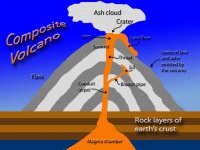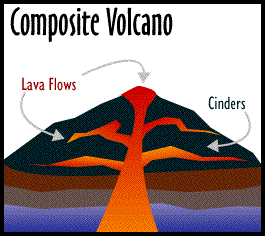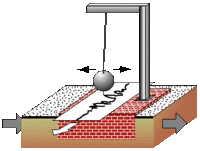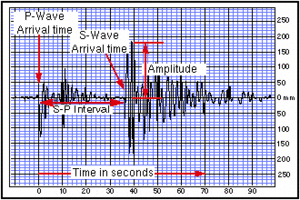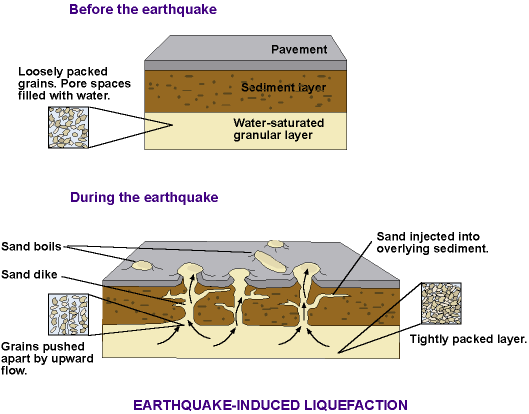Dynamic Planet/Earthquakes and Volcanoes
- This article is about the topic of Dynamic Planet for the 2009 and 2010 seasons. For information about the event in general, see Dynamic Planet Topics.
| Dynamic Planet/Earthquakes and Volcanoes | ||||||
|---|---|---|---|---|---|---|
| Type | Earth Science | |||||
| Category | Study | |||||
| Event Information | ||||||
| Latest Appearance | 2010 | |||||
| Forum Threads | ||||||
| ||||||
Earthquakes and Volcanoes was the topic of Dynamic Planet for the 2009 and 2010 seasons.
Overview
The topic for this event varies from year to year, so in an effort to retain useful content for when topics cycle back in, yearly topics will be set up as sections within the page.
Links
- GMOA Notes
- Crave the Wave (seismic wave section)
- Dynamic Planet/Tectonics - similar, but not equivalent, topic
General Advice
A good way to start studying this event is by reading Earth Science, Ecology, and Weather books. Simple as they are, it might be worth your time to start with the Macmillan books. Their 'Dynamic Earth' gives you a background on earth science if you know little or none to start with. Learning some plate tectonics basics and information on ocean floor spreading out of this book will only take you a few minutes.
Demystified and For Dummies books are good to start out. They usually simplify the topics, but give a good overview of the material. College textbooks are best to use to prepare for state or regional competitions, because usually it is a college professor writing the test, and they will base it off a textbook. Cheap textbooks can be found at Amazon.com, Abebooks.com. Half-priced books are at Ebay and at library book sales. Also, a general geology textbook seems to have most of the stuff listed in the rules.
For topics which are not covered by these books, Wikipedia is a good source of information.
For 2009 and 2010 only one 8.5" by 11" sheet of paper, front and back will be allowed as a resource. Therefore, you should be careful of what you put on the sheet. Only put on what you need. Don't waste space with information that you have memorized. It is advised to type the notesheet and to have important vocabulary and information highlighted.
Volcanoes
Types of Volcanoes
Shield Volcanoes
Shield volcanoes are broad, domed volcanoes that resemble shields (hence the name). These volcanoes are formed from basaltic lava flows, which have a low viscosity. Shield volcanoes' wide shape is caused by the fluid lava, which travels farther out than the high viscosity lava of composite volcanoes. The way the lava of these volcanoes erupts and flows out in many different directions to form a shield shape is called an effusive eruption.
Cinder Cone Volcanoes
Cinder cone volcanoes, also called scoria cones, are the conical volcanoes that we usually think about when it comes to volcanoes.
Volcano Hazards
- Lahars
- Pyroclastic Flows
- Fluid mass of rock fragments and gases
- Pyroclastic surges
- Low density flows of pyroclast
- 3 types
- Base
- Base of eruption column
- Ash cloud
- During main eruption column
- Ground surges
- Base of pyroclastic flow
- Debris avalanches landslides and tsunamis
- Base
- Lava flows
- Least dangerous
- Slow
- Destruction of property
- May produce floods
- Volcanic gases
- C02 - Carbon Dioxide
- S02 - Sulfur Dioxide
- HCI - Hydrogen Chloride
- H2S - Hydrogen Sulfide
- CO - Carbon Monoxide
- CH4 - Methane
- Produce acid rain
- Lake poisoning
- Directed Blast
- Large area of damage
- Very hot blast of air
- Common
Types of eruptions
- Strombolian
- Huge clots of molten lave
- Luminous arcs
- Can/has been used to describe many different types of eruptions
- True Strombolian
- Short explosive outbursts of pasty lava
- No eruption Columns
- Ejects Bombs
- No Peles tears/hair
- Little or no flowing lava
- A'a flows common
- Can form from a Funarole
- Vulcanan
- Dense ash laden clouds
- High rising eruption column
- Peleon or Nuee Ardente
- Large amount of gas
- Glowing pyroclatic flow
- Hawaiian
- Incandescent lava spurts
- Calmest eruptions
- Long eruptions
- Fire fountains
- Pilian (or vesuvian)
- Volatile rich dactia lava
- Variable duration
- Longest eruption with felsic lava types
- Large eruption columns
- Dangerous
- Lava lakes
- Lava forms ponds or lakes in vents craters or depressions
- The longest lasting lava lake was in the Halemaumau crater from 1823 to 1924
Volcanoes and Climate Change
- Two measured indices
- Dust veil Index (DVI)
- Estimation of dust in air
- Volcanic explosivity index (VEI)
- Dust veil Index (DVI)
- Volcanic eruptions emit two (major) things
- Tephra
- volcanic gases
Eruptions can spew large amount of gasses into the atmosphere, which contribute to a concept know as global cooling. This occurs where the gas particles reflect sunlight before it even reaches Earth's surface. Global cooling can help offset Global Warming, and has been know to induce periods of cooling. Negative factors of this include a major change in solar radiation, and changes in El Nino and Southern Oscillation, which have great impact on global weather patterns.
Tsunamis
Tsunamis are generated when sea floor abruptly changes. When it approaches shore, the tsunami wave slows, grows, and erodes the shoreline, thus causing significant damage at landfall.
Earthquakes
Earthquakes occur when energy stored in elastically strained rocks is suddenly released. This release of energy causes intense ground shaking in the area near the source of the earthquake and sends waves of elastic energy, called seismic waves, throughout the Earth. Earthquakes can be generated by bomb blasts, volcanic eruptions, and sudden slippage along faults. Earthquakes are definitely a geologic hazard for those living in earthquake prone areas, but the seismic waves generated by earthquakes are invaluable for studying the interior of the Earth.
An earthquake itself is a vibration of the earth produced by rapid release of energy. The focus is where the rock breaks creating an earthquake, and energy moves outward from the focus in seismic waves.
Origin of Earthquakes
Most natural earthquakes are caused by sudden slippage along a fault zone. The elastic rebound theory suggests that if slippage along a fault is hindered such that elastic strain energy builds up in the deforming rocks on either side of the fault, when the slippage does occur, the energy released causes an earthquake. This theory was discovered by making measurements at a number of points across a fault. Prior to an earthquake it was noted that the rocks adjacent to the fault were bending. These bends disappeared after an earthquake suggesting that the energy stored in bending the rocks was suddenly released during the earthquake.
Rock breakage is typically caused by stress (AKA pressure) acting on a rock. Types of stresses include:
- Compression
- Tensional
- Shear
Strainis the deformation caused as the result of stress. Types of strain include:
- Elastic deformation: when stresses are removed, rock returns to original shape. Brittle materials break during elastic deformation.
- Plastic deformation: permanent deformation. when stress is removed rocks stay bent
Rupture occurs when the rock fully breaks or fractures, causing an earthquake.
Seismic Waves
When an earthquake occurs, the elastic energy is released and sends out vibrations that travel throughout the Earth. These vibrations are called seismic waves. The study of how seismic waves behave in the Earth is called seismology.
The source of an earthquake is called the focus, which is an exact location within the Earth were seismic waves are generated by sudden release of stored elastic energy. The epicenter is the point on the surface of the Earth directly above the focus. Sometimes the media get these two terms confused. Seismic waves emanating from the focus can travel in several ways, and thus there are several different kinds of seismic waves.
Body Waves
Body Waves emanate from the focus and travel in all directions through the body of the Earth. There are two types of body waves.
P-Waves
P-waves are Primary waves. They travel with a velocity that depends on the elastic properties of the rock through which they travel.
[math]\displaystyle{ V_P = \sqrt{K+4/3\mu\over p} }[/math]
Where, [math]\displaystyle{ V_P }[/math] is the velocity of the P-wave, [math]\displaystyle{ K }[/math] is how incompressible the material is, [math]\displaystyle{ \mu }[/math] is the rigidity of the material, and [math]\displaystyle{ p }[/math] is the density of the material.
P-waves are the same thing as sound waves. They move through the material by compressing it, but after it has been compressed it expands, so that the wave moves by compressing and expanding the material as it travels. Thus the velocity of the P-wave depends on how easily the material can be compressed (the how incompressible it is), how rigid the material is (the rigidity), and the density of the material. P-waves have the highest velocity of all seismic waves and thus will reach all seismographs first.
S-Waves
S-waves are Secondary waves, also called shear waves. They travel with a velocity [math]\displaystyle{ V_S }[/math] that depends only on the rigidity [math]\displaystyle{ \mu }[/math] and density [math]\displaystyle{ p }[/math] of the material through which they travel:
[math]\displaystyle{ V_S = \sqrt{\mu\over p} }[/math]
S-waves travel through material by shearing it or changing its shape in the direction perpendicular to the direction of travel. The resistance to shearing of a material is the property called the rigidity. It is notable that liquids have no rigidity, so that the velocity of an S-wave is zero in a liquid. (This point will become important later). Note that S-waves travel slower than P-waves, so they will reach a seismograph after the P-wave.
Surface Waves
Surface waves differ from body waves in that they do not travel through the Earth, but instead travel along paths nearly parallel to the surface of the Earth. Surface waves behave like S-waves in that they cause up and down and side to side movement as they pass, but they travel slower than S-waves and do not travel through the body of the Earth.
When comparing to the body waves:
- P-waves are:
- primary
- fastest
- travels though solids and liquids
- S waves are:
- secondary shaking side to side
- solids only
- Surface waves are:
- referred to as l-waves
- complex motion up-down and side to side
- slowest
- most damage to structures
Measuring and Recording Earthquakes
Seismometers
Seismic waves travel through the Earth as vibrations. A seismometer or a seismograph is an instrument used to record these vibrations and the resulting graph that shows the vibrations is called a seismogram. The seismometer must be able to move with the vibrations, yet part of it must remain nearly stationary.
This is accomplished by isolating the recording device (like a pen) from the rest of the Earth using the principal of inertia. For example, if the pen is attached to a large mass suspended by a spring, the spring and the large mass move less than the paper which is attached to the Earth, and on which the record of the vibrations is made.
Houfeng Didong Yi
Houfeng Didong Yi was the name given to the first seismoscope. Houfeng Didong Yi was created by Zhang Heng in 132 CE. According to the Book of the Later Han (a compilation of Chinese Historical works by Fan Ye) Houfeng Didong Yi was bronze, had a radius of approximately 1 meter, and had 8 dragons spaced on its top, each holding bronze balls.
When there was a earthquake/tremor the ball would fall from the dragons mouth to the mouth of the toad below making noise. The dragon who's ball fell out would indicate the direction from which the earthquake came.
Modern Seismometers
Modern seismometers are normally electronic.
- Basic components
- Drum with paper
- Bar with two hinges
- Weight
- Pen
The bar is attached to the weight, which is on the pen. when there is an earthquake The vibrations move the paper creating a record of the earthquake.
Seismograms
The record of an earthquake, a seismogram, as recorded by a seismometer, will be a plot of vibrations versus time. On the seismogram, time is marked at regular intervals, so that we can determine the time of arrival of the first P-wave and the time of arrival of the first S-wave.
(Note again, that because P-waves have a higher velocity than S-waves, the P-waves arrive at the seismographic station before the S-waves).
Locating an Earthquake
In order to determine the location of an earthquake, we need to have recorded a seismogram of the earthquake from at least three seismographic stations at different distances from the epicenter of the quake. In addition, we need one further piece of information - the time it takes for P-waves and S-waves to travel through the Earth and arrive at a seismographic station. Such information has been collected over the last 80 or so years, and is available as travel time curves.
Distance to the Epicenter
In order to find the distance to the epicenter, you can use the equation (SP lag time x 100)/(SP lag time at 100 km). To find the SP lag time at 100 km, let's assume that the speed of a P-wave is 6.1 km/s and the speed of an S-wave is 4.1 km/s. Divide 100 by 6.1 to find how long it takes a P-wave to travel 100 km. Do the same thing to find how long it takes an S-wave to travel 100 km. Subtract the numbers, and you should get 8 seconds.
Now find the SP lag time on the seismogram you are reading. Multiply that by 100 and divide your answer by the lag time at 100 km. This will give you the distance to the epicenter.
S-P Interval
The S-P interval is the difference in the time of arrival of the first S-wave and the time of arrival of the first P-wave. Note that on the travel time curves, the S-P interval increases as distance from the epicenter increases.
Exact Location
In order to determine the exact location, you need seismograms from three or more stations. The S-P interval tells us the distance to the epicenter from the seismographic station where the earthquake was recorded. Thus, we can draw circles on a map with each station at once circle's center. Each circle will have a radius equal to the distance from the epicenter for the station it corresponds to. These circles will intersect in a point that locates the epicenter of the earthquake.
This link provides a good tutorial for using this method to find the epicenter of an earthquake.
Magnitude of Earthquakes
Whenever a large destructive earthquake occurs in the world the press immediately wants to know where the earthquake occurred and how big the earthquake was (in California the question is usually - Was this the Big One?). The size of an earthquake is usually given in terms of a scale called the Richter Magnitude.
Richter Magnitude is a scale of earthquake size developed by a seismologist named Charles F. Richter. The Richter Magnitude involves measuring the amplitude (height) of the largest recorded wave at a specific distance from the earthquake. While it is correct to say that for each increase in 1 in the Richter Magnitude, there is a tenfold increase in amplitude of the wave, it is incorrect to say that each increase of 1 in Richter Magnitude represents a tenfold increase in the size of the Earthquake (as is commonly incorrectly stated by the Press).
A better measure of the size of an earthquake is the amount of energy released by the earthquake. The amount of energy released is related to the Richter Scale by the following equation:
[math]\displaystyle{ \log{E}=11.8+1.5M }[/math]
Where [math]\displaystyle{ \log }[/math] refers to the logarithm with base 10, [math]\displaystyle{ E }[/math] is the energy released in ergs, and [math]\displaystyle{ M }[/math] is the Richter Magnitude.
Anyone with a hand calculator can solve this equation by plugging in various values of M and solving for E, the energy released. I've done the calculation for you in the following table:
| Magnitude | Energy (ergs) |
|---|---|
| 1 | 2.0 x 10^13 |
| 2 | 6.3 x 10^14 |
| 3 | 2.0 x 10^16 |
| 4 | 6.3 x 10^17 |
| 5 | 2.0 x 10^19 |
| 6 | 6.3 x 10^20 |
| 7 | 2.0 x 10^22 |
| 8 | 6.3 x 10^23 |
From these calculations you can see that each increase in 1 in Richter Magnitude represents a 31 fold increase in the amount of energy released. Thus, a magnitude 7 earthquake releases 31 times more energy than a magnitude 6 earthquake. A magnitude 8 earthquake releases 31 x 31 or 961 times more energy than a magnitude 6 earthquake.
The Hiroshima atomic bomb released an amount of energy equivalent to a magnitude 5.5 earthquake. The largest earthquake recorded, the Alaska earthquake in 1964, had a Richter Magnitude of about 8.6. Note that larger earthquakes are possible, but have not been recorded by humans.
Earthquake Hazards
Earthquakes are catastrophic events that have severe hazards that may accompany them.
Ground Motion
Shaking of the ground caused by the passage of seismic waves near the epicenter of the earthquake is responsible for the collapse of most structures. The intensity of ground shaking depends on distance from the epicenter and on the type of bedrock underlying the area.
Ground shaking depends on:
- Local geological positions, such as loose unconsolidated sediment, which is worst
- Size
- Distance from epicenter: farther away the less damage
- Construction
- Concrete are brittle and will damage more easily
- Wood and steel less susceptible to damage since they are more flexible
Ground Motion may have several consequences. Some of these include:
- Faulting and Ground Rupture- Ground rupture only occurs along the fault zone that moves during the earthquake. Thus structures that are built across fault zones may collapse, whereas structures built adjacent to, but not crossing the fault may survive.
- Subsidence- the motion of a surface as it shifts downward. This process can cause the destruction of roads, buildings, etc.
- Rapid Mass-Wasting Processes - In mountainous regions subjected to earthquakes ground shaking may trigger rapid mass-wasting events like landslides, rock and debris falls, rock and debris slides, slumps, and debris avalanches.
- Liquefaction- Liquefaction is a processes that occurs in water-saturated unconsolidated sediment due to shaking. In areas underlain by such material, the ground shaking causes the grains to loose grain to grain contact, and thus the material tends to flow.
You can demonstrate this process to yourself next time your go the beach. Stand on the sand just after an incoming wave has passed. The sand will easily support your weight and you will not sink very deeply into the sand if you stand still. But, if you start to shake your body while standing on this wet sand, you will notice that the sand begins to flow as a result of liquefaction, and your feet will sink deeper into the sand.
Fire
Fire is a secondary effect of earthquakes. Because power lines may be knocked down and because natural gas lines may rupture due to an earthquake, fires are often started closely following an earthquake. The problem is compounded if water lines are also broken during the earthquake since there will not be a supply of water to extinguish the fires once they have started. In the 1906 earthquake in San Francisco more than 90% of the damage to buildings was caused by fire.
Flooding
Ground shaking can cause dams and levees to crack, releasing the water being held in the reservoir and flooding a large area downstream.
Tsunamis are giant ocean waves that can rapidly travel across oceans. Earthquakes that occur along coastal areas can generate tsunamis, which can cause damage thousands of kilometers away on the other side of the ocean. These can cause buildings to be destroyed, they cause flooding, etc.
Aftershocks
Aftershocks are smaller quakes that occur after the major earthquake. Aftershocks are very dangerous because they can further collapse structures that are already damaged. Also, after the main quake is over, people might start exploring the damage, not realizing that another shock is coming.
Earthquake Risk
The risk that an earthquake will occur close to where you live depends on whether or not tectonic activity that causes deformation is occurring within the crust of that area. For the U.S., the risk is greatest in the most tectonically active area, that is near the plate margin in the Western U.S. Here, the San Andreas Fault which forms the margin between the Pacific Plate and the North American Plate, is responsible for about 1 magnitude 8 or greater earthquake per century. Also in the western U.S. is the Basin and Range Province, where extensional stresses in the crust have created many normal faults that are still active. Historically, large earthquakes have also occurred in the area of New Madrid, Missouri; Charleston, South Carolina; and an area extending from New Jersey to Massachusetts. (See figure 10.10 in your text). Why earthquakes occur in these other areas is not well understood. If earthquakes have occurred before, they are expected to occur again. Earthquake Damage
Many seismologists have said that "earthquakes don't kill people, buildings do". This is because most deaths from earthquakes are caused by buildings or other human construction falling down during an earthquake. Earthquakes located in isolated areas far from human population rarely cause any deaths. Thus, in earthquake prone areas like California, there are strict building codes requiring the design and construction of buildings and other structures that will withstand a large earthquake. While this program is not always completely successful, one fact stands out to prove its effectiveness. In 1986 an earthquake near San Francisco, California with a Richter Magnitude of 7.1 killed about 40 people. Most were killed when a double decked freeway collapsed. About 10 months later, an earthquake with magnitude 6.9 occurred in the Armenia, where no earthquake proof building codes existed. The death toll in the latter earthquake was about 25,000!
World Distribution of Earthquakes
The distribution of earthquakes is referred to as seismicity. Most earthquakes occur along relatively narrow belts that coincide with plate boundaries. This makes sense, since plate boundaries are zones along which lithospheric plates mover relative to one another. Earthquakes along these zones can be divided into shallow focus earthquakes that have focal depths less than about 70 km and deep focus earthquakes that have focal depths between 75 and 700 km.
Diverging plate boundaries are zones where two plates move away from each other, such as at oceanic ridges. In such areas the lithosphere is in a state of tensional stress and thus normal faults and rift valleys occur. Earthquakes that occur along such boundaries show normal fault motion and tend to be shallow focus earthquakes, with focal depths less than about 20 km. Such shallow focal depths indicate that the brittle lithosphere must be relatively thin along these diverging plate boundaries.
Transform Fault Boundaries Transform fault boundaries are plate boundaries where lithospheric plates slide past one another in a horizontal fashion. The San Andreas Fault of California is one of the longer transform fault boundaries known. Earthquakes along these boundaries show strike-slip motion on the faults and tend to be shallow focus earthquakes with depths usually less than about 50 km.
Converging Plate Boundaries Convergent plate boundaries are boundaries where two plates run into each other. Thus, they tend to be zones where compressional stresses are active and thus reverse faults or thrust faults are common. There are two types of converging plate boundaries. (1) subduction boundaries, where oceanic lithosphere is pushed beneath either oceanic or continental lithosphere; and (2) collision boundaries where two plates with continental lithosphere collide.
- 1. Subduction Boundaries
- At subduction boundaries cold oceanic lithosphere is pushed back down into the mantle where two plates converge at an oceanic trench. Because the subducted lithosphere is cold it remains brittle as it descends and thus can fracture under the compressional stress. When it fractures, it generates earthquakes that define a zone of earthquakes with increasing focal depths beneath the overriding plate. This zone of earthquakes is called the Benioff Zone. Focal depths of earthquakes in the Benioff Zone can reach down to 700 km.
- 2. Collision Boundaries
- At collisional boundaries two plates of continental lithosphere collide resulting in fold-thrust mountain belts. Earthquakes occur due to the thrust faulting and range in depth from shallow to about 200 km.
The Earth's Internal Structure
Much of what we know about the interior of the Earth comes from knowledge of seismic wave velocities and their variation with depth in the Earth. Recall that body wave velocities are as follows:
[math]\displaystyle{ V_p = \frac{K + \frac{4}{3} m}{r} }[/math]
[math]\displaystyle{ V_s = \frac{m}{r} }[/math]
Where K = incompressible
m = rigidity
r = density
If the properties of the earth (K, m, and r) were the same throughout, then Vp and Vs would be constant throughout the Earth and seismic waves would travel along straight line paths through the Earth. We know, however, that density must change with depth in the Earth, because the density of the Earth is 5,200 kg/cubic meter and density of crustal rocks is about 2,500 kg/cubic meter. If the density were the only property to change, then we could make estimates of the density, and predict the arrival times or velocities of seismic waves at any point away from an earthquake. Observations do not follow the predictions, so, something else must be happening. In fact we know that K, m, and r change due to changing temperatures, pressures and compositions of material. The job of seismology is, therefore, to use the observed seismic wave velocities to determine how K, m, and r change with depth in the Earth, and then infer how P, T, and composition change with depth in the Earth. In other words, to tell us something about the internal structure of the Earth.
Reflection and Refraction of Seismic Waves
If composition (or physical properties) change abruptly at some interface, then seismic waves will both reflect off the interface and refract (or bend) as they pass through the interface. Two cases of wave refraction can be recognized.
- If the seismic wave velocity in the rock above an interface is less than the seismic wave velocity in the rock below the interface, the waves will be refracted or bent upward relative to their original path.
- If the seismic wave velocity decreases when passing into the rock below the interface, the waves will be refracted down relative to their original path.
- If the seismic wave velocities gradually increase with depth in the Earth, the waves will continually be refracted along curved paths that curve back toward the Earth's surface.
One of the earliest discoveries of seismology was a discontinuity at a depth of 2900 km where the velocity of P-waves suddenly decreases. This boundary is the boundary between the mantle and the core and was discovered because of a zone on the opposite side of the Earth from an Earthquake focus receives no direct P-waves because the P-waves are refracted inward as a result of the sudden decrease in velocity at the boundary. This zone is called a P-wave shadow zone.
This discovery was followed by the discovery of an S-wave shadow zone. The S-wave shadow zone occurs because no S-waves reach the area on the opposite side of the Earth from the focus. Since no direct S-waves arrive in this zone, it implies that no S-waves pass through the core. This further implies the velocity of S-wave in the core is 0. In liquids m = 0, so S-wave velocity is also equal to 0. From this it is deduced that the core, or at least part of the core is in the liquid state, since no S-waves are transmitted through liquids. Thus, the S-wave shadow zone is best explained by a liquid outer core.
Over the years seismologists have collected data on how seismic wave velocities vary with depth in the Earth. Distinct boundaries, called discontinuities, are observed when there is sudden change in physical properties or chemical composition of the Earth. From these discontinuities, we can deduce something about the nature of the various layers in the Earth. As we discussed way back at the beginning of the course, we can look at the Earth in terms of layers of differing chemical composition, and layers of differing physical properties.
Layers of Different Physical Properties
At a depth of about 100 km there is a sudden decrease in both P and S-wave velocities. This boundary marks the base of the lithosphere and the top of the asthenosphere. The lithosphere is composed of both crust and part of the upper mantle. It is a brittle layer that makes up the plates in plate tectonics, and appears to float and move around on top of the more ductile asthenosphere.
At the top of the asthenosphere is a zone where both P- and S-wave velocities are low. This zone is called the Low-Velocity Zone (LVZ). It is thought that the low velocities of seismic waves in this zone are caused by temperatures approaching the partial melting temperature of the mantle, causing the mantle in this zone to behave in a very ductile manner.
At a depth of 400 km there is an abrupt increase in the velocities of seismic waves, thus this boundary is known as the 400 - Km Discontinuity. Experiments on mantle rocks indicate that this represents a temperature and pressure where there is a polymorphic phase transition, involving a change in the crystal structure of Olivine, one of the most abundant minerals in the mantle.
Another abrupt increase in seismic wave velocities occurs at a depth of 670 km. It is uncertain whether this discontinuity, known as the 670 Km Discontinuity, is the result of a polymorphic phase transition involving other mantle minerals or a compositional change in the mantle, or both.
This is from http://www.tulane.edu/~sanelson/geol111/earthint.htm
Layers of Differing Composition
The Crust - Mohorovicic discovered boundary the boundary between crust and mantle, thus it is named the Mohorovicic Discontinuity or Moho, for short. The composition of the crust can be determined from seismic waves by comparing seismic wave velocities measured on rocks in the laboratory with seismic wave velocities observed in the crust. Then from travel times of waves on many earthquakes and from many seismic stations, the thickness and composition of the crust can be inferred.
- In the ocean basin's crust is about 8 to 10 km thick, and has a composition that is basaltic.
- Continental crust varies between 20 and 60 km thick. The thickest continental crust occurs beneath mountain ranges and the thinnest beneath lowlands. The composition of continental crust varies from granitic near the top to gabbroic near the Moho.
- The Mantle - Seismic wave velocities increase abruptly at the Moho. In the mantle wave velocities are consistent with a rock composition of peridotite which consists of olivine, pyroxene, and garnet.
- decrease and S-wave velocities go to zero. This is the top of the outer core. As discussed above, the outer core must be liquid since S-wave velocities are 0. At a depth of about 4800 km the sudden increase in P-wave velocities indicate a solid inner core. The core appears to have a composition consistent with mostly Iron with small amounts of Nickel.
Glossary
For a glossary of vocabulary terms relating to Earthquakes and Volcanoes, please see Dynamic Planet/Earthquakes and Volcanoes Vocabulary.
Links
- Frank Potter's Science Gems - Earth Science II
- Earth Quake Map
- US Geological Survey
- USGS Photo Glossary of Volcanic Terms
- Michigan Tech UPSeis program
- Robotman's page used for the event Compute This
- USGS Volcanoes
- San Diego State Volcano site
- A good site for practice in finding epicenters
- GMOA Notes


